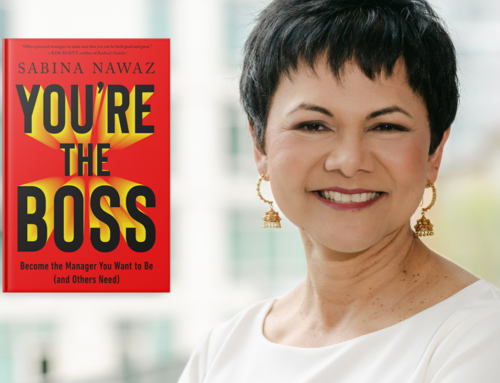Ryan Foland is a personal branding expert and an all-around delightful human being, so I was happy to catch up with him on his new book, Ditch the Act, which he co-wrote with his business partner Leonard Kim.
Nick: Ryan, why should we all ‘Ditch the Act’?
Ryan: To ditch the act is simply to be yourself. And I believe we should all be ourselves. But the reality is that it’s not always as easy as it sounds.
In 2015 there was a moment in my life that changed the way I thought. Up until this point, I was under the impression that the best way to build a personal brand and grow my speaking business was to do what all the other successful speakers were doing. I was posting regularly on social media highlighting my thought leadership and promoting podcasts that I was a guest on. I was sharing the small wins along the way.
The problem was that nobody was reading the blogs I was writing. Nobody was inviting me to speak on their stages (and I was offering to do it for free!). I was getting no traction or interaction on my social media channels. I felt like I was doing all the right things but was going nowhere.
Then I got a ticket to a networking event at Keith Ferrazzi’s house – the New York Times bestseller author and world expert on networking – because I had a friend who was invited and couldn’t go. I felt like a stand-in. I was presenting myself the way that I wanted to be seen among other young entrepreneurs — successful. But I really wasn’t.
Keith challenged us to introduce ourselves at dinner not by sharing our successes but by sharing something that was going wrong, personally or professionally. That was one of the most interesting dinners I have ever had. For the first time in a while, I was vulnerable. I shared the challenges I was facing of writing material but having no one read it and wanting to speak but no one wanting to give me a chance.
Leonard Kim was sitting at my table. He shared how he had 10 million reads on his content and that people asked him to speak all the time, but that he was sad because he just broke up with his girlfriend. I became Leonard’s client, then his friend, and ultimately his business partner.
If you want to connect with people on a more personal level you need to ditch the act. If you want to create content that relates with your audience, you need to ditch the act. If you want to truly build real relationships with people in your network then you will have to open up, ditch the act, and let them get to know you. And that does not mean only sharing your successes and highlight reels.
Nick: What’s important about this book now?
Ryan: This book is important now because it’s never been more confusing on how to present yourself in a world that relies so much on the digital footprint that you leave. Fundamentally, I believe most people who are trying to build a brand are doing the right things. But there’s a good chance that they’re doing the right things in the wrong order, and that’s why they’re not seeing traction.
What if the answer was hiding in plain sight?
What if the way to hyper-accelerate your ability to connect with more people more often, is to be you more often. To be human.
This book is a reminder that the best way to stand out in today’s crowded market is to double down on being yourself.
You are the only one with your unique experiences. You have plenty of stories that many people can learn from — but you have not likely shared them for fear of being judged. Time to start sharing!
Nick: In a world in which it’s getting harder and harder to get people’s attention, what are you recommending to cut through the clutter?
We recommend sharing a slice of your reality that people can relate to. It sounds harsh, but I tell people that “no one cares about your story.” Instead, they care about “how they see themselves in your story.” And when you share more details about your stories, you have more chances to connect with people on a personal level. When you get people to connect to you on a personal level, that is how you stand out.
How you deal with struggles is a great way to showcase who you are as a person. How you changed as a person based on your experiences can be inspiring for others who have or who are going through similar situations.
As there are more and more people online it does become harder and harder to stand out. But this rapid expansion of people and data will only make real human connection that much more important. And in a world of bots and automation, when you ditch the act and be your unique self, you increase the chances of standing out for others who share similar experiences to you in their past and in their current.
Nick: Tell us about the thinking behind this book?
Ryan: The thinking behind this book was to really break down a system that we call the Expose Yourself Process.
Over the last five years, as I’ve built my personal brand, there’s certain things that worked and lots of things that didn’t. This book packages a proven process to build a brand by being you.
It shows how vulnerability is a powerful tool to create real connection with your audience. Leonard Kim and I put a lot of thought into creating this book over the last 3 years.
The book is divided into three sections.
In the first section, Leonard and I go first and share our backstories, holding nothing back. One of the most powerful concepts in the book is what we call an Exposure Resume. It is a resume which helps to tease out the moments that you are afraid to share. Then it helps you to understand how to share them in a way that gets people to care more about you and what you do.
In the second part of the book, we prove to you why you should ditch the act by giving examples of research and people from all walks of life who have found success by being themselves.
And in the third part of the book, we show you how to build a brand through the Expose Yourself Process, laying out a step-by-step plan that you can follow and work through.
Nick: Finally, tell us more about Ryan — what makes you tick
Ryan: Three things make me tick: solving problems, making things simple, and sailing!
One of my favorite things to do is solve a problem. It’s something I’ve been doing ever since I can remember. I was the Ginger kid in the neighborhood who would come to your door, trying to sell all kinds of wacky inventions for things that I saw as problems. Though none of my products took off, I did solve the problem of putting up Christmas lights for my neighbors, and that carried me all the way to college.
The problems that I focus on solving these days are the problems people face when communicating who they are to the world.
Building a brand can be complex and confusing. But I think I have found a way to make things simple. It is as simple as being yourself more often.
When I am not speaking, or helping entrepreneurs craft their pitches, I am likely on or near the ocean, ideally on a sailboat. I grew up spending time with my family on boats on an island off the coast of Southern California, Catalina Island. Sailing can be crazy exciting and also crazy boring. But I love it all. When I am on the ocean or in the ocean, I feel alive.
Oh, I also love drawing stick figures, and I sometimes rap.
Nick: Thanks, Ryan, and good luck with the book.









You really delivered on the “all-around delightful” essence of Ryan, Nick! Of all the people you’ve featured, he’s my favorite.
In the “we contain multitudes” department, how enchanting that he made a business out of putting up Christmas lights for neighbors, draws stick figures, raps, and sails.
What I most related to was the essence of his book. Marketing guru Michael Levine says the question we all need to answer is, “What do you most want, and what are you willing to give up to get it?” I thought becoming a public speaker meant giving up any semblance of a life as I pitched those services. When, as Ryan suggests, it means sharing what I’m most afraid to share — in hopes it’ll help others who are staring down similar challenges.
Thanks, Maureen — coming from someone who has herself interviewed so many people so delightfully, that’s great to hear!